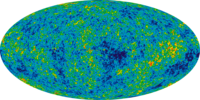
Photo from wikipedia
This paper deals with the effect of exploiting background knowledge for improving an OMR (Optical Music Recognition) deep learning pipeline for transcribing medieval, monophonic, handwritten music from the 12th–14th century,… Click to show full abstract
This paper deals with the effect of exploiting background knowledge for improving an OMR (Optical Music Recognition) deep learning pipeline for transcribing medieval, monophonic, handwritten music from the 12th–14th century, whose usage has been neglected in the literature. Various types of background knowledge about overlapping notes and text, clefs, graphical connections (neumes) and their implications on the position in staff of the notes were used and evaluated. Moreover, the effect of different encoder/decoder architectures and of different datasets for training a mixed model and for document-specific fine-tuning based on an extended OMR pipeline with an additional post-processing step were evaluated. The use of background models improves all metrics and in particular the melody accuracy rate (mAR), which is based on the insert, delete and replace operations necessary to convert the generated melody into the correct melody. When using a mixed model and evaluating on a different dataset, our best model achieves without fine-tuning and without post-processing a mAR of 90.4%, which is raised by nearly 30% to 93.2% mAR using background knowledge. With additional fine-tuning, the contribution of post-processing is even greater: the basic mAR of 90.5% is raised by more than 50% to 95.8% mAR.
Journal Title: Algorithms
Year Published: 2022
Link to full text (if available)
Share on Social Media: Sign Up to like & get
recommendations!